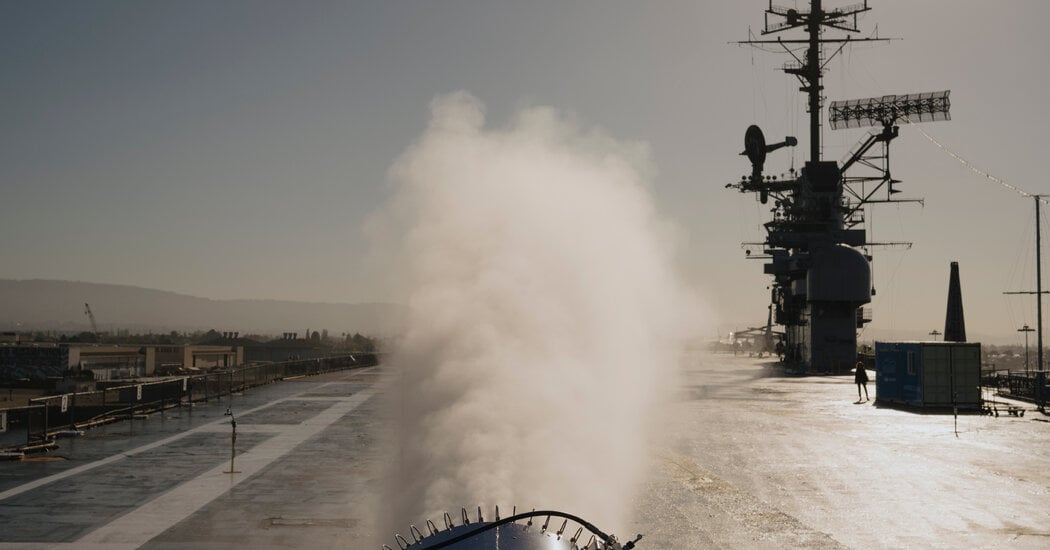A little before 9 a.m. on Tuesday, an engineer named Matthew Gallelli crouched on the deck of a decommissioned aircraft carrier in San Francisco Bay, pulled on a pair of ear protectors, and flipped a switch.
A few seconds later, a device resembling a snow maker began to rumble, then produced a great and deafening hiss. A fine mist of tiny aerosol particles shot from its mouth, traveling hundreds of feet through the air.
It was the first outdoor test in the United States of technology designed to brighten clouds and bounce some of the sun’s rays back into space, a way of temporarily cooling a planet that is now dangerously overheating. The scientists wanted to see whether the machine that took years to create could consistently spray the right size salt aerosols through the open air, outside of a lab.
If it works, the next stage would be to aim at the heavens and try to change the composition of clouds above the Earth’s oceans.
As humans continue to burn fossil fuels and pump increasing amounts of carbon dioxide into the atmosphere, the goal of holding global warming to a relatively safe level, 1.5 degrees Celsius compared with preindustrial times, is slipping away. That has pushed the idea of deliberately intervening in climate systems closer to reality.



There are real concerns about side effects. Climate isn’t localized, it is a global system; rapidly cooling one area of the globe could have catastrophic impacts elsewhere.
I can’t seem to find the article I read on this now, but some people are calling for global legislation requiring any attempt at this to be reviewed and approved as a bare minimum effort.